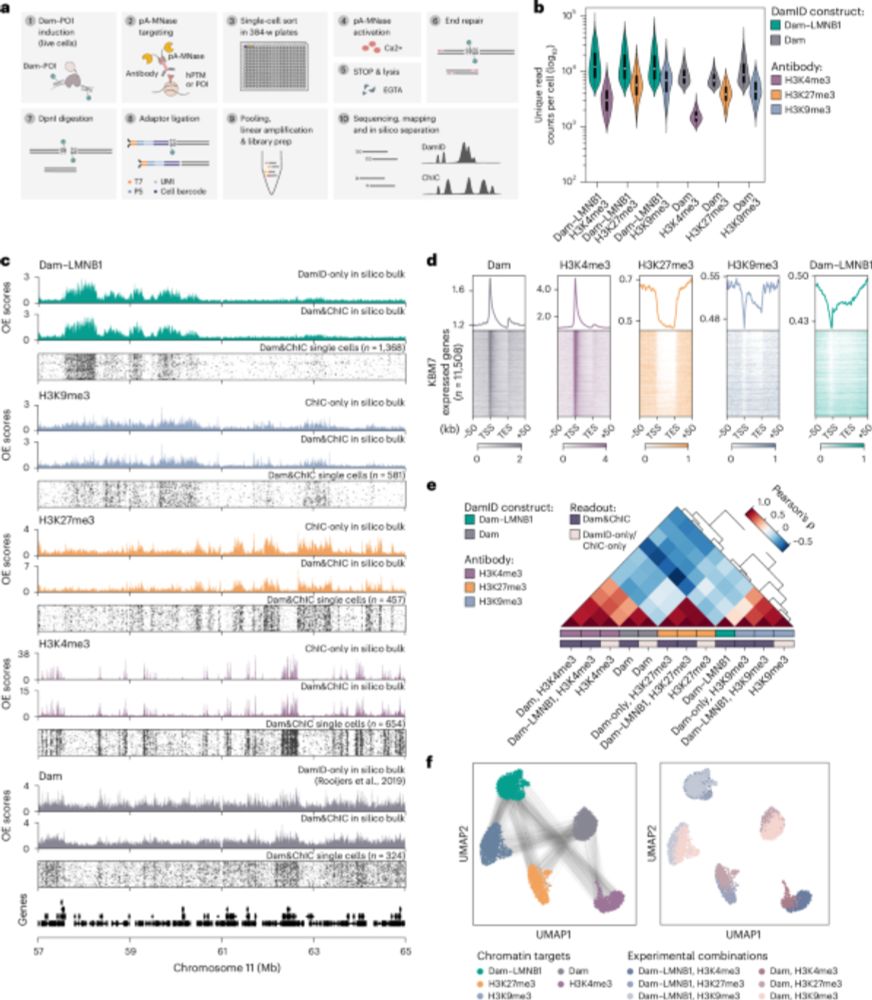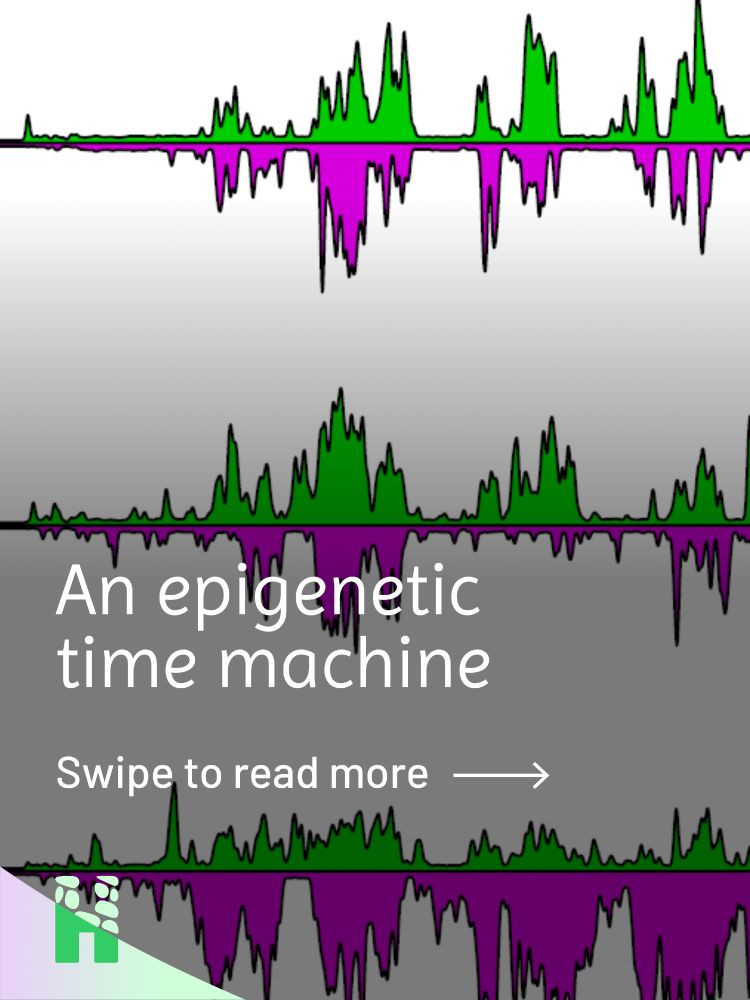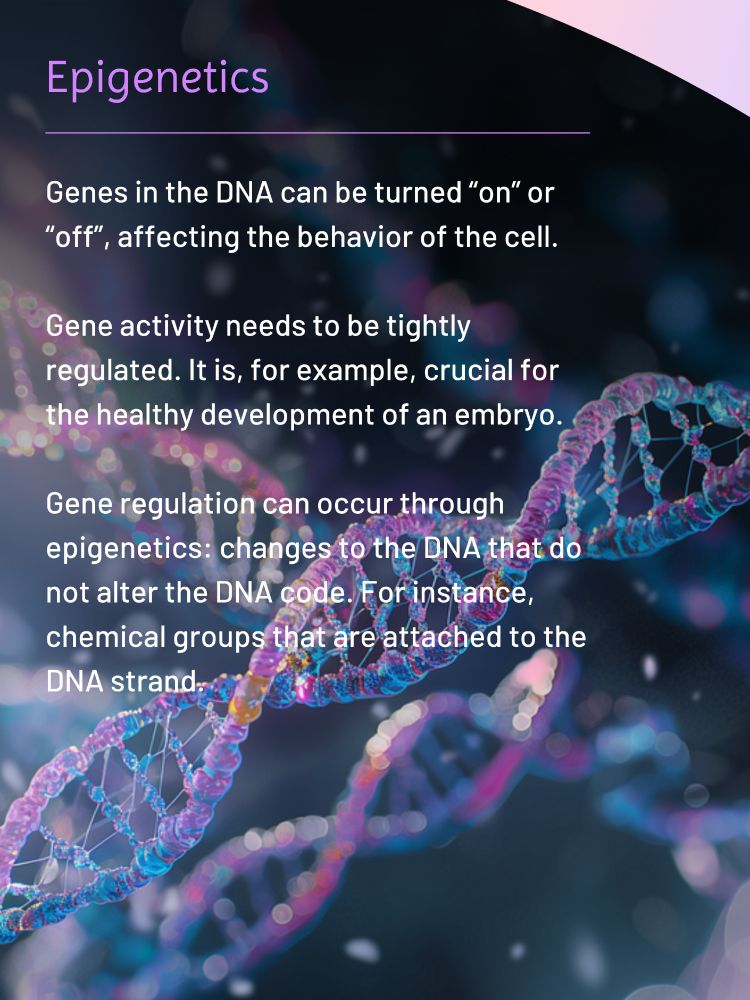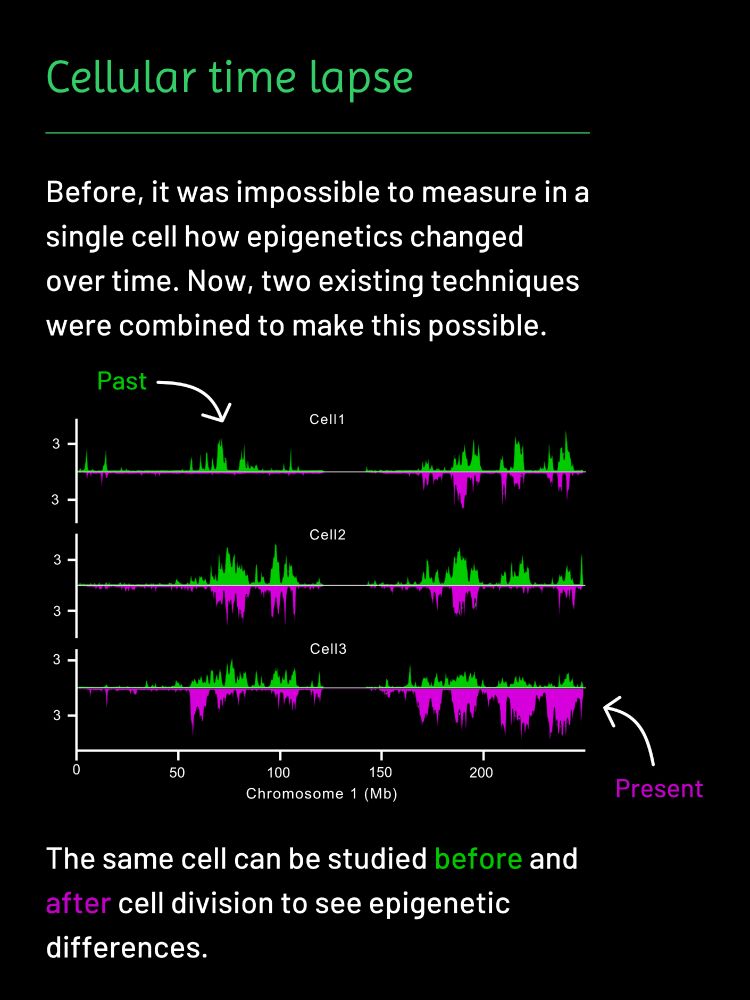6/ Together, our work links nuclear architecture, epigenetic state, and MeCP2 activity to the spatiotemporal control of long neuronal genes.
With implications for understanding Rett syndrome and broader mechanisms of cortical development.
Great collaboration with Basak (UMC Utrecht) team
🧵//
17.09.2025 08:48 — 👍 0 🔁 0 💬 0 📌 0
5/ Strikingly, MeCP2’s function appears context-dependent:
• In prenatal cortex: MeCP2 promotes activation of long genes.
• In postnatal cortex: MeCP2 represses the same genes
17.09.2025 08:46 — 👍 0 🔁 0 💬 1 📌 0
4/ Mechanistically, we identify MeCP2 (mutated in Rett syndrome) as a candidate regulator.
MeCP2 binds long LAD genes before they are released and transcribed, pointing to a stage-specific role in gene priming.
17.09.2025 08:45 — 👍 0 🔁 0 💬 1 📌 0
3/ These long neuronal genes often detach from the nuclear lamina before activation, suggesting lamina release is an early regulatory step in corticogenesis.
This spatial reorganization aligns with their role in neurodevelopmental disorders, including ASD.
17.09.2025 08:44 — 👍 0 🔁 0 💬 1 📌 0
2/ Using in utero electroporation + scDam&T-seq, we jointly profiled transcriptomes and lamina-associated domains (LADs) in embryonic cortex.
We found widespread lamina reorganization during differentiation, strongly enriched at long neuronal genes (≥100 kb).
17.09.2025 08:42 — 👍 0 🔁 0 💬 1 📌 0

Join this year's CSH Asia Systems Biology of Gene Regulation & Genome Editing meeting in beautiful Suzhou, China, Oct 20-24. Let's bring the international communities together! Abstract deadline Sept 19! Infos and registration at csh-asia.org?content/2767. Please repost!
11.09.2025 06:09 — 👍 31 🔁 19 💬 2 📌 0
Very proud of Kim to be featured by MIT Technology Review as one of this year's innovators under 35 for her pioneering work on mapping DNA repair in single cells! @oncodeinstitute.bsky.social @hubrechtinstitute.bsky.social
11.09.2025 08:59 — 👍 11 🔁 1 💬 0 📌 0
This is not a HiC map! Ever wondered if multiple enhancers get activated simultaneously? We measured chromatin accessibility on thousands of molecules by nanopore to create genome-wide co-accessibility maps. Proud of @mathias-boulanger.bsky.social @kasitc.bsky.social Biology in the thread👇
18.08.2025 13:00 — 👍 113 🔁 34 💬 10 📌 0

Extensive differences observed in 3D genome structure between homologous heterozygous chromosomes revealed by Genome Architecture Mapping #GAM in the @apombo1.bsky.social lab ➡️ www.embopress.org/doi/full/10....
15.05.2025 17:32 — 👍 21 🔁 11 💬 1 📌 0

We’re looking for curious, innovative science leaders at EMBL Heidelberg! 🔬🧬🦠
Join a vibrant, interdisciplinary community where collaboration and innovation are nurtured at all levels.
Take a look at these four open positions 👇
07.08.2025 08:28 — 👍 73 🔁 73 💬 2 📌 4

We found a new asymmetry in the large-scale chromosome structure: sister chromatids are systematically shifted by hundreds of kb in the 5′→3′ direction of their inherited strands! The work was led by Flavia Corsi, in close collaboration with the Daniel Gerlich lab.
www.biorxiv.org/content/10.1...
1/
15.07.2025 08:11 — 👍 111 🔁 58 💬 3 📌 7
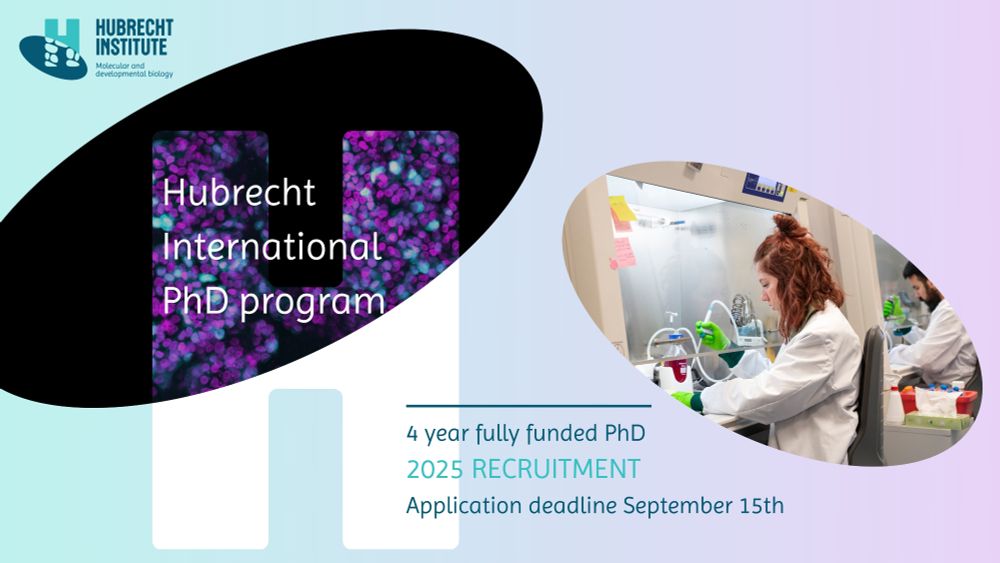
🧬 Looking for a PhD position in molecular or developmental biology? 🔬
✉️ The Hubrecht Institute now has its very own PhD program! Applications are open and will be accepted until September 15th. Read more here 👉 www.hubrecht.eu/hipp/
10.07.2025 11:19 — 👍 14 🔁 13 💬 0 📌 5
Image-based, pooled phenotyping reveals multidimensional, disease-specific variant effects
Genetic variants often produce complex phenotypic effects that confound current assays and predictive models. We developed Variant in situ sequencing (VIS-seq), a pooled, image-based method that measures variant effects on molecular and cellular phenotypes in diverse cell types. Applying VIS-seq to ~3,000 LMNA and PTEN variants yielded high-dimensional morphological profiles that captured variant-driven changes in protein abundance, localization, activity and cell architecture. We identified gain-of-function LMNA variants that reshape the nucleus and autism-associated PTEN variants that mislocalize. Morphological profiles predicted variant pathogenicity with near-perfect accuracy and distinguished autism-linked from tumor syndrome-linked PTEN variants. Most variants impacted a multidimensional continuum of phenotypes not recapitulated by any single functional readout. By linking protein variation to cell images at scale, we illuminate how variant effects cascade from molecular to subcellular to cell morphological phenotypes, providing a framework for resolving the complexity of variant function. ### Competing Interest Statement FPR is an advisor and shareholder in Constantiam Biosciences. National Human Genome Research Institute, https://ror.org/00baak391, RM1HG010461, R01HG013025 National Institute of General Medical Sciences, R35GM152106 National Heart Lung and Blood Institute, https://ror.org/012pb6c26, K99HL177347, R01HL171174, R01HL164675 Chan Zuckerberg Initiative (United States), CZIF2024-010284, CP-2-1-Fowler Brotman Baty Institute, https://ror.org/03jxvbk42, CC28 United States Department of Veterans Affairs, I01BX006428, IK2BX004642 Novo Nordisk Foundation, https://ror.org/04txyc737, Alex's Lemonade Stand for Childhood Cancer RUNX1 Foundation
⚡ I developed VIS-seq with the help of dougfowler.bsky.social and others at UW Genome Sciences. Check out my preprint:
www.biorxiv.org/content/10.1...
2/9
07.07.2025 02:44 — 👍 4 🔁 1 💬 1 📌 0

UMAP of LMNA variant profiles (left) colored by Louvain-derived clusters. Colors legend at bottom.
Graphical representation (right) of lamin A processing, localization, aggregation, and degradation, annotated with their relationship to dimerization, multimerization and variant clusters.
🌎 LMNA variant ➡️ structure ➡️ abundance and localization ➡️ function! VIS-seq maps LMNA variant effects across scales of cellular organization and discovered a new subset of gain-of-function LMNA variants.
7/9
07.07.2025 02:44 — 👍 2 🔁 1 💬 1 📌 0
Exciting opportunity at @scilifelab.se
04.07.2025 07:22 — 👍 2 🔁 2 💬 0 📌 0
Beautiful work Grace!! Congratulations!
03.07.2025 19:26 — 👍 0 🔁 0 💬 0 📌 0
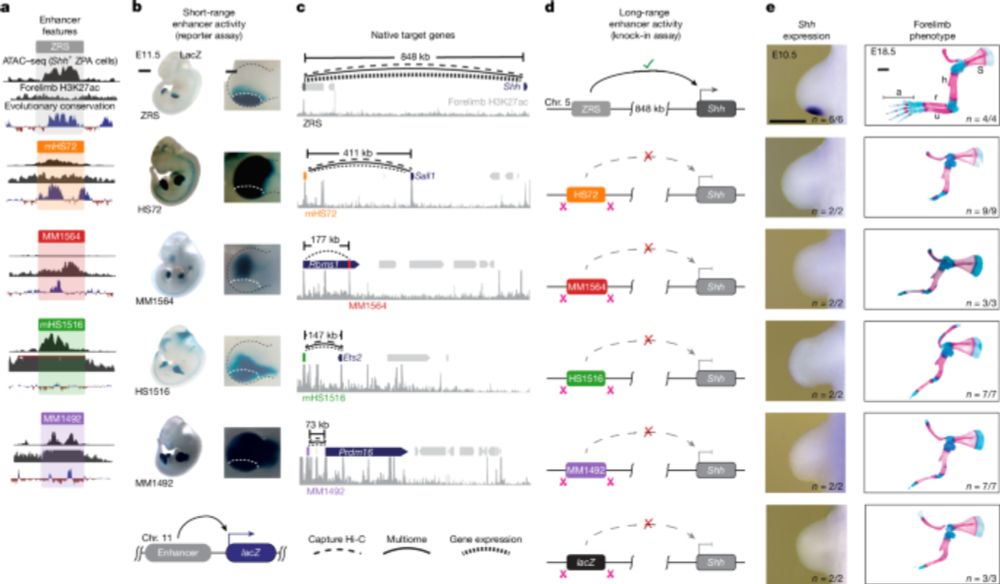
Range extender mediates long-distance enhancer activity - Nature
The REX element is associated with long-range enhancer–promoter interactions.
Our paper describing the Range Extender element which is required and sufficient for long-range enhancer activation at the Shh locus is now available at @nature.com. Congrats to @gracebower.bsky.social who led the study. Below is a brief summary of the main findings www.nature.com/articles/s41... 1/
02.07.2025 16:17 — 👍 186 🔁 90 💬 10 📌 9

Delighted that our work on positional memory is now published. We asked how axolotl cells 'know' which part of the limb to regenerate after injury.
www.nature.com/articles/s41...
A joy to work with super team Sarah Plattner, Yuka Sugiura, Francisco Falcon and Elly Tanaka.
🧵1/14
21.05.2025 15:05 — 👍 211 🔁 67 💬 23 📌 9

Thesis cover image
🧬What makes one cell different from another? Kim de Luca developed methods that help answer this question. They can be used to study DNA organization, regulation and repair in single cells. Today she successfully defended her thesis. Congratulations Kim!🎓 Read more 👉 www.hubrecht.eu/phd-kim-de-l...
30.06.2025 14:46 — 👍 7 🔁 1 💬 0 📌 0
Today, on ‘Be Open about Animal Research Day’, we spotlight how research with zebrafish brings us closer to healthier hearts. #BOARD25
Sharing about 80% of heart disease–causing genes with humans, the zebrafish is an excellent model to study how hearts develop, become diseased and might regenerate.
03.06.2025 08:34 — 👍 9 🔁 3 💬 1 📌 0
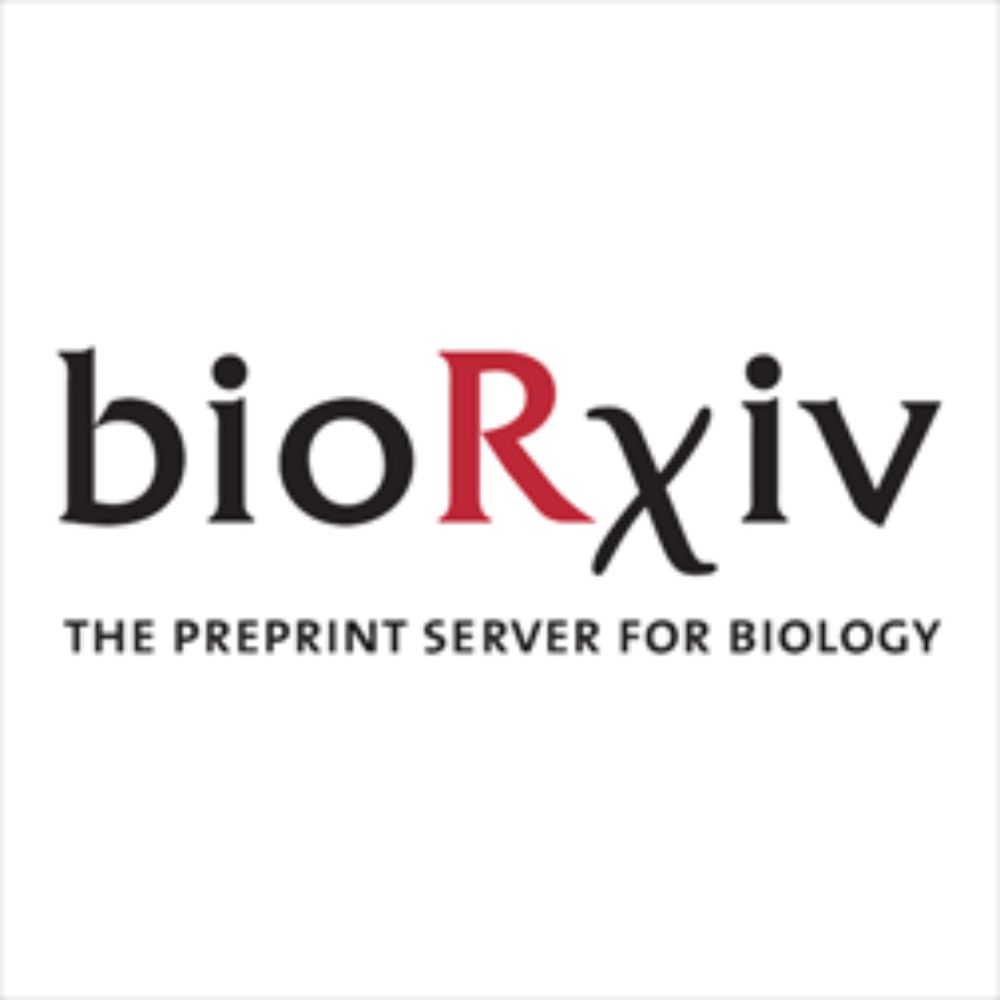
Reconfiguration of genome-lamina interactions marks the commissioning of limb cell-fates
Diverse forms of heterochromatin block inappropriate transcription and safeguard differentiation and cell identity. Yet, how and when heterochromatin is reconfigured to facilitate changes in cell-fate...
🚨 Preprint 🚨
Ever wondered how cells prepare their genomes to enable new cell-fates? In this team up with the Kind lab, we show that genes are repositioned in the nucleus to get ready for future activation and tissue formation. Read 🧵👇 to find out how and when this happens!
doi.org/10.1101/2025...
08.05.2025 09:42 — 👍 37 🔁 23 💬 1 📌 3

Jop Kind
Ik doe mee aan Alpe d’HuZes omdat ik geloof dat wij samen kunnen werken aan een wereld waarin je niet meer doodgaat aan kanker, wil jij mij steunen?
This year I am climbing the alpe d’Huez by bike 6 times to raise money for cancer research. 100% of the funds are directly invested into cancer research. Please click on the link below if you wish to fund this cause and help me reach my goals. Thanks!
www.opgevenisgeenoptie.nl/fundraisers/...
28.04.2025 07:42 — 👍 6 🔁 1 💬 0 📌 0
Join our team as a postdoc and explore the exciting world of transposable elements and developmental biology with us! @imbavienna.bsky.social @vbcscitraining.bsky.social
06.04.2025 16:24 — 👍 38 🔁 41 💬 1 📌 1
We challenged our researchers to describe their work in 10 words or less. See how they did in this video!
24.03.2025 10:03 — 👍 97 🔁 19 💬 4 📌 4
Onderzoek Rabobank:
Nederland verliest miljarden euro’s bij bezuiniging op groeifondsen
innovationorigins.com/nl/onderzoek...
17.03.2025 14:14 — 👍 2 🔁 1 💬 0 📌 0
Genomics, AI, sequence-to-function models, mechanisms of the cis-regulatory code. Investigator at the Stowers Institute.
Visualizing RNA regulation in living cells, one molecule at a time.
Human and viral RNAs.
Hubrecht Institute, Oncode Institute and dept. of Bionanoscience, TU Delft
https://www.helmholtz-munich.de/en/ife
Associate professor at ETH Zurich, studying the cellular consequences of genetic variation. Affiliated with the Swiss Institute of Bioinformatics and a part of the LOOP Zurich.
Studying regulation of and by TEs in early mammalian development. Postdoc in Torres-Padilla lab @HelmholtzMunich. PhD in Dekker lab @UmassMedical
Scientist, Director of ISREC Foundation, mentor and manager, epigenetist
Group leader of Chromatin (Dys)function lab @MDC-BIMSB
Former Postdoc @Mundlos lab
PhD @ Schirmer lab
https://www.mdc-berlin.de/robson
Postdoc at KI | PhD at CNIO | Brain, cancer, omics, immunology.
Often working out, usually doing science, always challenging myself.
We are a research lab at the Netherlands Cancer Institute. We develop and apply new genomics tools to study genome biology and gene regulation.
We study chromosomal replication & recombinational repair mechanisms, Smc5/6, SUMO-based controls using multidisciplinary approaches. Tweets are a group effort.
typing...
(also active on X as @cees_dekker)
Scientist — Biophysicist
https://tglab.princeton.edu/
https://research.pasteur.fr/en/team/physics-of-biological-functions/
Deputy Director of the Institute for Intelligent Biotechnologies at HelmholtzMunich, former editor @naturebiotech.bsky.social, all views expressed here are my own
Research group at Karolinska Institute - SciLifeLab. Stockholm, Sweden. Managed by Vicent Pelechano.
Studying the function of chromatin in DNA Double Strand break repair at the CBI in Toulouse
Scientist at University of Edinburgh. Director of MRC Human Genetics Unit but posting in my own capacity.
Group leader at the Hubrecht Institute, fascinated by tissue regeneration. Studies the axolotl, a vertebrate capable of regenerating entire limbs after injury, and uses the principles learnt to build 3D tissues in vitro. 🇳🇱🇦🇹🇬🇧🇯🇵
Leading developer of CUT&RUN and CUT&Tag chromatin mapping assays and other tools for chromatin research. Follow us for the latest news in epigenetics.







